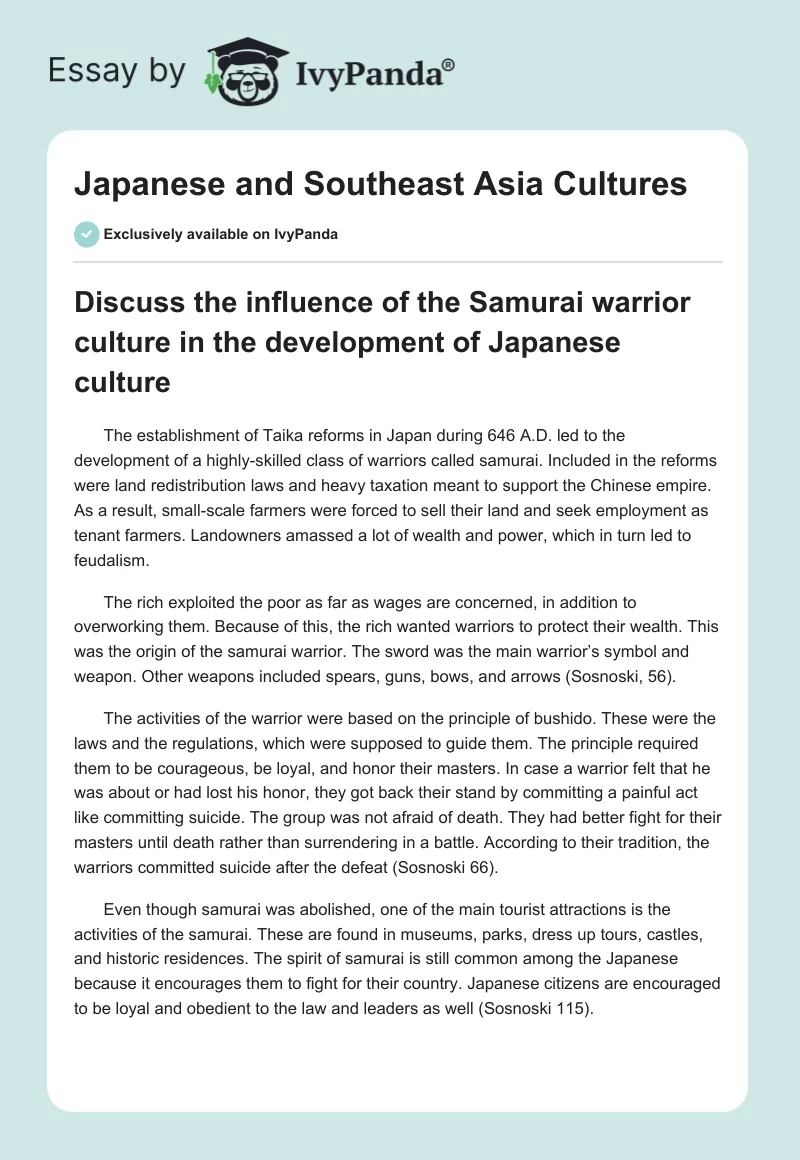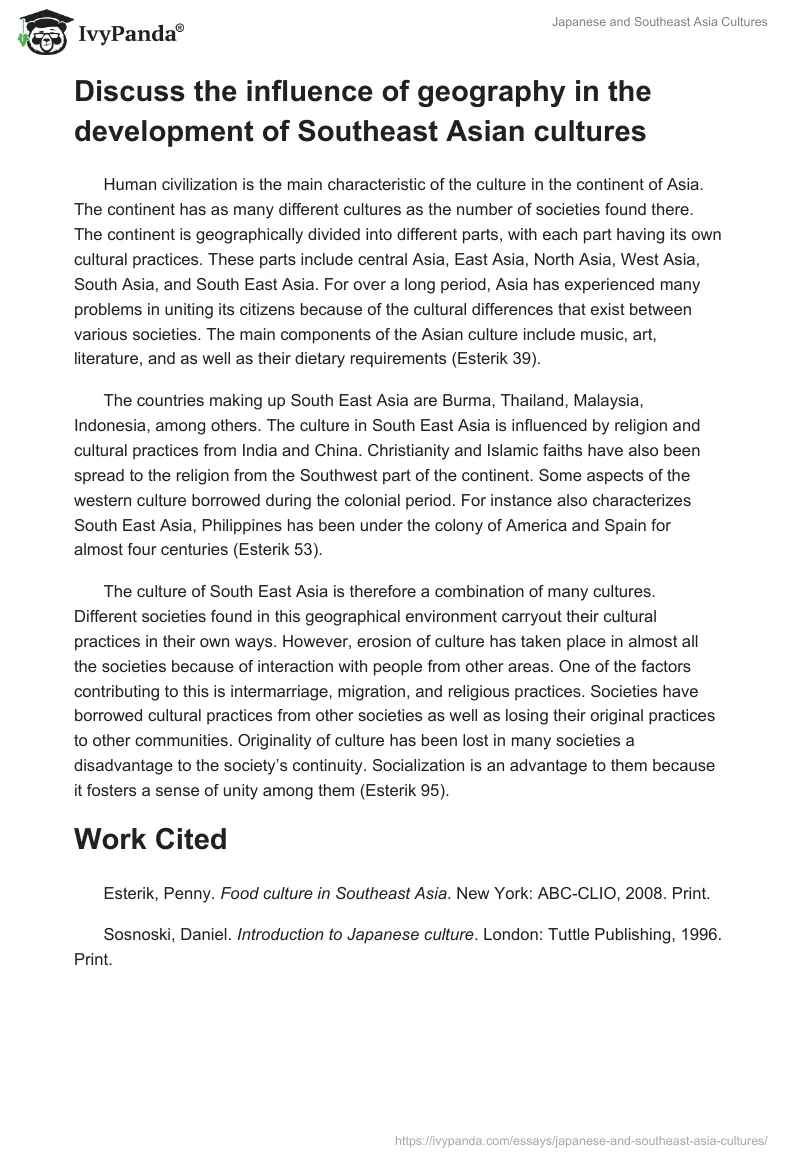Discuss the influence of the Samurai warrior culture in the development of Japanese culture
The establishment of Taika reforms in Japan during 646 A.D. led to the development of a highly-skilled class of warriors called samurai. Included in the reforms were land redistribution laws and heavy taxation meant to support the Chinese empire. As a result, small-scale farmers were forced to sell their land and seek employment as tenant farmers. Landowners amassed a lot of wealth and power, which in turn led to feudalism.
The rich exploited the poor as far as wages are concerned, in addition to overworking them. Because of this, the rich wanted warriors to protect their wealth. This was the origin of the samurai warrior. The sword was the main warrior’s symbol and weapon. Other weapons included spears, guns, bows, and arrows (Sosnoski, 56).
The activities of the warrior were based on the principle of bushido. These were the laws and the regulations, which were supposed to guide them. The principle required them to be courageous, be loyal, and honor their masters. In case a warrior felt that he was about or had lost his honor, they got back their stand by committing a painful act like committing suicide. The group was not afraid of death. They had better fight for their masters until death rather than surrendering in a battle. According to their tradition, the warriors committed suicide after the defeat (Sosnoski 66).
Even though samurai was abolished, one of the main tourist attractions is the activities of the samurai. These are found in museums, parks, dress up tours, castles, and historic residences. The spirit of samurai is still common among the Japanese because it encourages them to fight for their country. Japanese citizens are encouraged to be loyal and obedient to the law and leaders as well (Sosnoski 115).
Discuss the influence of geography in the development of Southeast Asian cultures
Human civilization is the main characteristic of the culture in the continent of Asia. The continent has as many different cultures as the number of societies found there. The continent is geographically divided into different parts, with each part having its own cultural practices. These parts include central Asia, East Asia, North Asia, West Asia, South Asia, and South East Asia. For over a long period, Asia has experienced many problems in uniting its citizens because of the cultural differences that exist between various societies. The main components of the Asian culture include music, art, literature, and as well as their dietary requirements (Esterik 39).
The countries making up South East Asia are Burma, Thailand, Malaysia, Indonesia, among others. The culture in South East Asia is influenced by religion and cultural practices from India and China. Christianity and Islamic faiths have also been spread to the religion from the Southwest part of the continent. Some aspects of the western culture borrowed during the colonial period. For instance also characterizes South East Asia, Philippines has been under the colony of America and Spain for almost four centuries (Esterik 53).
The culture of South East Asia is therefore a combination of many cultures. Different societies found in this geographical environment carryout their cultural practices in their own ways. However, erosion of culture has taken place in almost all the societies because of interaction with people from other areas. One of the factors contributing to this is intermarriage, migration, and religious practices. Societies have borrowed cultural practices from other societies as well as losing their original practices to other communities. Originality of culture has been lost in many societies a disadvantage to the society’s continuity. Socialization is an advantage to them because it fosters a sense of unity among them (Esterik 95).
Work Cited
Esterik, Penny. Food culture in Southeast Asia. New York: ABC-CLIO, 2008. Print.
Sosnoski, Daniel. Introduction to Japanese culture. London: Tuttle Publishing, 1996. Print.


